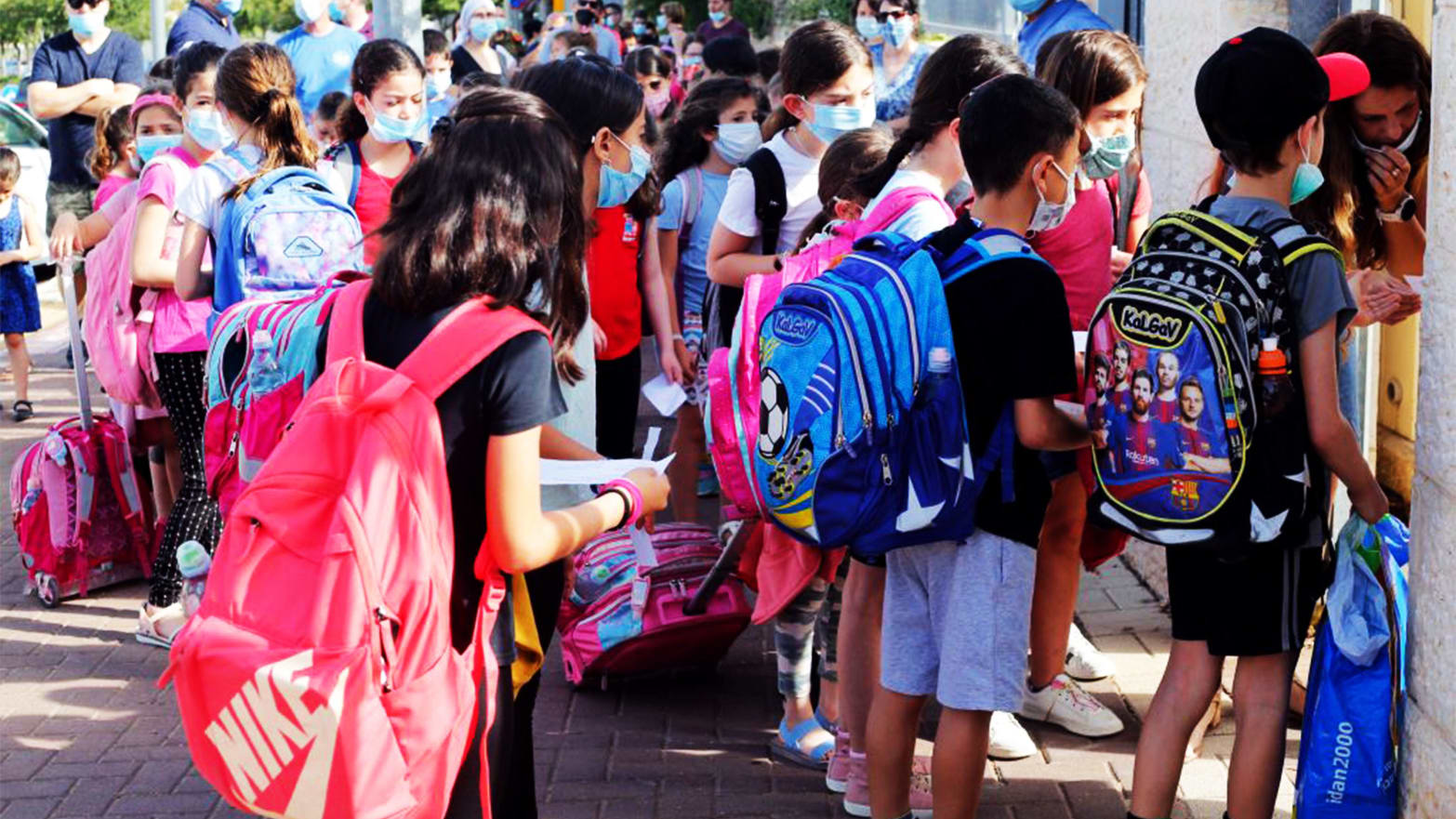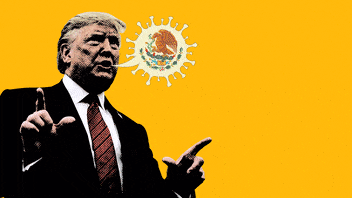begin quote from:
Israeli Data Show School Openings Were a Disaster That Wiped Out Lockdown Gains
GRADING ON THE CURVE
Of 1,400 Israelis diagnosed with COVID-19 last month, 657 (47 percent) were infected in schools. Now 2,026 students, teachers, and staff have it, and 28,147 are quarantined.

Xinhua News Agency/Getty
JERUSALEM—Israel’s unchecked resurgence of COVID-19 was propelled by the abrupt May 17 decision to reopen all schools, medical and public-health officials have told The Daily Beast.
“We know Israelis have terrible discipline, but now, it’s the leadership. ”
— Galia Rahav, Sheba Medical Center in Tel Aviv
The assessment of Israel’s trajectory has direct bearing on the heated debate underway in the United States between President Donald Trump, who is demanding a nationwide reopening of schools for what appear to be largely political reasons, and health authorities who caution it could put the wider population at risk.
ADVERTISEMENT
Importantly, on May 17 in Israel it appeared the virus not only was under control, but defeated. Israel reported only 10 new cases of COVID-19 in the entire country that day. In the U.S., the debate often is about reopening schools where the disease is not only not in decline, but surging.
On Sunday, for instance, U.S. Education Secretary Betsy DeVos told Chris Wallace on Fox News Sunday, “There’s nothing in the data that suggests that kids being in school is in any way dangerous.” But that is not the case in Israel, where the data from June, the last month for which there is a full set of statistics, appear all too clear.
The road from anti-coronavirus paradigm to rampant infection in this country of 9 million people followed two months of almost total lockdown. May 17 also was the day Prime Minister Benjamin Netanyahu and his former rival Benny Gantz swore in their “corona emergency government,” whose sole declared purpose is to fight the spread of the virus. Netanyahu’s decree that the nation’s entire school system would reopen was a political flourish to signal everything was under control.
The announcement followed a more cautious experiment of several weeks in which only children in the first, second, and third grades were brought back to classrooms, and taught in small, non-intersecting groups called “capsules.”
Hagai Levine, an epidemiologist at the Braun School of Public Health and Community Medicine of the Hebrew University of Jerusalem, and chairman of the Israeli Association of Public Health Physicians, said: “There was no measurable increase in contagion” while the capsules for young children were being tried out.
The association even offered the government an investigation into school-based infections of COVID-19, but was turned down.
ADVERTISING
Then, Levine says, “contrary to our advice, the government decided to open the entire system all at once on May 17. What happened next was entirely predictable.”
On June 3, two weeks after schools opened, more than 244 students and staff were found to test positive for COVID-19.
According to the education ministry, 2,026 students, teachers, and staff have contracted COVID-19, and 28,147 are in quarantine due to possible contagion.
Just in the first two weeks of July, 393 kindergartens and schools open for summer programs have been shuttered due to cases of COVID-19.
RELATED IN WORLD
On July 2, Eric Feigl-Ding, an epidemiologist and health economist at the Federation of American Scientists, tweeted a chart showing Israel’s rate of infection surging past Europe and fast approaching the disastrous rate in the U.S., noting that it was exactly one month since the reopening of Israeli schools.
The level of school contagion became public last week during testimony provided to Israeli legislators by Udi Kliner, the health ministry’s deputy director of public-health services, whose boss had just quit in protest against the government’s mishandling of the crisis. Israel now surpasses 1,200 new cases of COVID-19 a day.
On Tuesday, Israel reported 1,681 new cases of COVID-19 infection, its worst result since the outbreak began.
The source of the infection explosion can be seen clearly in the numbers from June. As Kliner told the Knesset, 1,400 Israelis were diagnosed with the disease last month. Of those, 185 caught it at events such as weddings, 128 in hospitals, 113 in workplaces, 108 in restaurants, bars, or nightclubs, and 116 in synagogues, according to Kliner, while 657—which is to say 47 percent of the total—were infected by the coronavirus in schools.
“Not a single school was prepared,” says Mohammad Khatib, who teaches public health at the Zefat Academic College and is the epidemiological expert on the health ministry’s newly formed advisory committee on the coronavirus in the Arab sector.
“Adults, including teachers and other employees, brought it into schools, which are, in the end, closed spaces,” he said, underscoring the finding that middle-school children proved to be the most dangerous vectors.
“The younger students were more obedient and easier to control in a classroom setting,” Khatib said, “and had more respect for their teachers. Among high schoolers, there was a greater ability to understand. But it is in the nature of middle-school kids to rebel, not to obey teachers, not to wear masks or keep apart.”
The ministry of health did not respond to questions regarding the breakdown of schools and infections, and accurate, detailed numbers have become harder and harder to come by.
Levine, the Hebrew University epidemiologist, said that in general, “There is no transparency regarding the statistics. The data is not being made available to epidemiologists, so it is impossible to gauge precisely, but we saw many confirmed cases of COVID-19 in middle schools— it is very possible that caused the outbreak.”
The month of June, which began exactly two weeks after Israel’s school system was suddenly and shambolically reopened, “caused the second wave,” Khatib says. “Whatever else we say, the fact is that schools were not prepared to take students back under the necessary conditions to contain the epidemic.”
“The reopening happened too fast. It was undertaken so quickly that it triggered a very sharp spike, and the return to more conservative measures came too little, much too late,” Khatib says, summing up Israel’s dilemma.
Six weeks after forming an emergency government to handle the pandemic, and one week after promising that a “corona czar” would be appointed to take charge of the country’s haphazard response, Israel seems further than ever from its desired goal.
Calls are mounting for a national commission of inquiry to be appointed to investigate the government’s “dereliction of duty,” in the words of former Defense Minister Naftali Bennett.
On Sunday, Roni Numa, a retired army general who was the only known candidate for the czar job, withdrew his name after realizing he would not be given the authority needed to coordinate a national response.
Netanyahu devoted Monday to attempting to fire Yifat Shasha-Biton, chairwoman of the Knesset’s corona committee and a member of his own Likud party, for the crime of defying his directives regarding the reopening of public pools and gyms.
The prime minister, who is struggling to keep ultra-religious coalition parties in line in the face of their demand to allow synagogues to admit up to 50 congregants at a time, ordered Shasha-Biton to keep gyms and pools closed.
But without evidence proving that pools and gyms cause an uptick in contagion, Shasha-Biton allowed her committee to vote for opening.
The health ministry has not released its own epidemiological findings on gyms and pools, if they exist, and the ministry of education indicated it “intends to open schools as usual” on Sept. 1, even though the numbers from June would seem to provide conclusive data about the risks. In any case, no strategy is in place to prevent a second round of school epidemics.
Galia Rahav, who chairs the department of infectious diseases at the Sheba Medical Center in Tel Aviv, said in an interview that “what happened in schools is just too much gathering, day after day, and kids come home and infect mom and dad. The top numbers of new infections were in kids.”
Due to the large number of infections among children, she noted, “the average age of an Israeli with COVID-19 has gone down to between 20 and 39,” while infections in citizens over 65 have held steady. In Jerusalem, the Israeli city with the highest rate of infection, most of the people with COVID-19 are under the age of 35.
“It is certainly not impossible that the second wave started in schools,” Rahav said, carefully understating the case. “Discipline is at an awful level. We know Israelis have terrible discipline, but now, it’s the leadership that is completely inconstant, with one ‘leader’ saying one thing and another the contrary.”





No comments:
Post a Comment